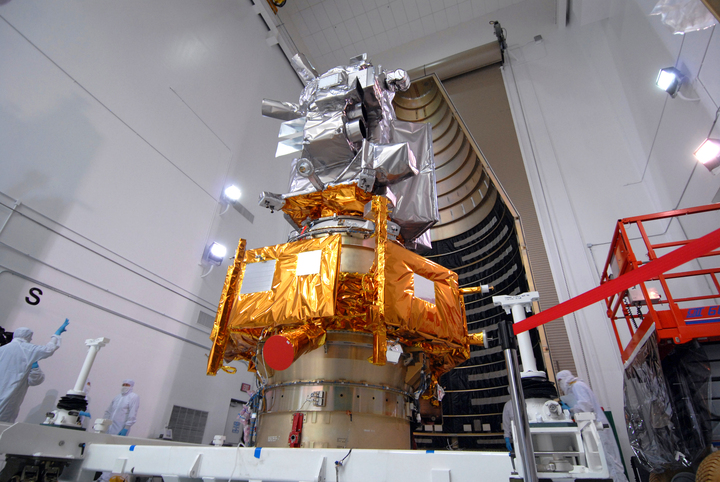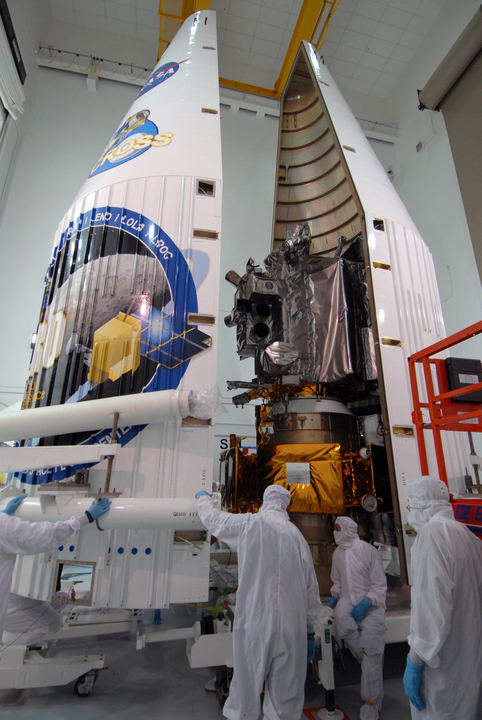The single best preparation for space mission operations is to practice whenever possible. The LCROSS Flight Team has been rehearsing various mission events for 14 months. But this week, we’ll hold the largest, most realistic and most difficult rehearsal in LCROSS development – the First Week Rehearsal. It will be a true test of whether our team can successfully operate the LCROSS spacecraft for days on end, under a very demanding schedule of events.
From the past year of tests, we know we can perform each of the events in the LCROSS mission timeline. We’ve done all of them multiple times, using a realistic spacecraft simulator, the actual flight computer and flight software, the actual ground data system and networks, interacting with the Deep Space Network, and under flight-like time constraints.
But there’s one thing missing – we’ve never done all of this for more than three days in a row. Our rehearsal will run for six days with no rest – simulating the busiest period in the entire mission.
The First Week Rehearsal (FWR) is unlike any test we’ve run before. It will simulate the first six days of flight, starting 5 hours before launch, and ending just after what we call “lunar swingby”, a graceful close approach to the moon that will throw our spacecraft into a huge phasing orbit around the Earth, and ultimately set us up for lunar impact just under four months later. FWR will follow the mission timeline exactly, minute for minute. Events that are scheduled at a particular time of day for the mission will be simulated at exactly the same time of day. Just as in the mission, our team will operate around the clock, performing every function we expect to perform for the mission.
Tonight, on the eve of “launch day”, let me describe what we’ll be doing each day. These events mimic exactly what we’ll be doing again starting on June 17:
Day 1: Launch, Activation & Checkout:
Our first launch opportunity is on 6/17 at 19:51 UTC, or Greenwich Time – 12:51 PM Pacific. Countdown for the rehearsal is posted on the web (http://countdown.ksc.nasa.gov/elv/). Prior to launch, a portion of our team will be testing the entire mission operations segment for launch readiness. In order to be “GO” for launch, the MOS must satisfy several Launch Commit Criteria (LCC’s). We test our whole system in the morning, and report our readiness to our reps at
After liftoff, our spacecraft will reach orbit in just over 8 minutes, and just 46 minutes after launch, both LRO and LCROSS will be on their way to the moon. LRO separates from our stack soon afterwards, and the Centaur will perform a series of maneuvers to place LCROSS in its target orbit, and to deplete its own propellant tank as much as possible. Finally, the Centaur wakes LCROSS up (called “activation”), and we can begin receiving telemetry and sending commands. This is a critical time – our first experience really flying the spacecraft. After a series of tests (called “checkout”), we place LCROSS into its full operational state, called
LCROSS, LRO and Centaur, during Trans-Lunar Injection, 46 minutes after launch.
Artwork courtesy of Northrop Grumman

Day 2: TCM 1 Planning and Execution, and Payload Quicklook:
Launch deliveries are never perfectly accurate – there are always “delivery errors” that a spacecraft has to make up for to get on track after launch. Our mission is no different. On this day, we’ll plan for our first Trajectory Correction Maneuver, or TCM, which happens 25 hours after we started our outbound journey toward the moon. One shift spends most of its time planning TCM 1 (while monitoring the spacecraft), the second shift “executes” the maneuver, then evaluates how well we did, based upon tracking data from the DSN. This is a mission-critical maneuver, and must be performed well.
Right after TCM 1, we’ll also perform our first science payload test, called Quicklook. It’s a simple test: power on the payload and instruments, and perform sampling on each one to verify that everything is functional. Then power everything off.
Day 3: TCM 2 Planning and Execution:
This day is a lot like Day 2, except the second TCM, 24 hours after TCM 1, should be smaller than the first. In fact, if TCM 1 goes perfectly, and nothing else disturbs our orbit (unlikely), we can skip TCM 2. We’ll continue evaluating spacecraft health, and getting the feel for how it operates for real.
Day 4/5: TCM 3 Planning and Execution, and Star Field Calibration:
TCM 3 is a “clean-up” maneuver for TCM 2, and should be even smaller than TCM 2. More importantly, we’ll be performing another science payload activity, called Star Field Calibration, just a few hours after our third “burn”.
The goal of
Day 5/6: Lunar Swingby:
This is our first major science activity – a very dramatic event. LCROSS will use the moon’s gravity to slingshot itself into a highly-inclined phasing orbit around the Earth, but at roughly lunar distance. This is the orbit that enables such a steep impact angle into the lunar south pole months later. Near our closest approach, some 8,000 km above the surface, we’ll turn on the science instruments and start snapping photos and taking spectra of the surface. We’ll also sweep the instruments across the lunar “limbs”, or edges of the lunar disk, as another means of determining mis-alignments of the science instruments. This is sure to be an exciting day, and will deliver our first images of the moon for the world.
After Lunar Swingby, we’ll begin to adjust to a more regular schedule of operations – Cruise Phase (more on that in a separate post). First Week Rehearsal will end here.
So, that’s the week in a nutshell. Wish us luck! Stay tuned to reports from the Mission Operations Control Room.




